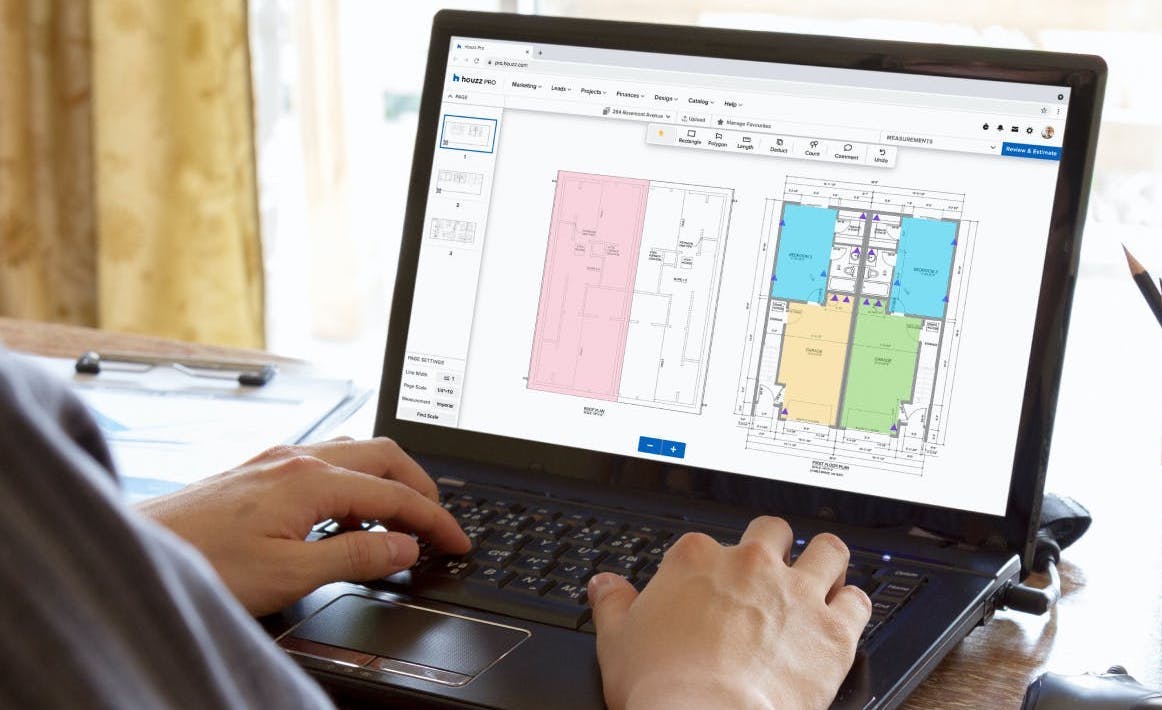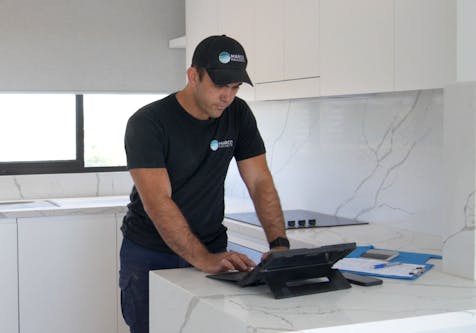Meet Julie Bowman, Construction Estimator and Stereotype Breaker
This industry pro shares tips for how women can succeed in construction — and how everyone can build estimates more easily

Nearly 9 in 10 construction workers are male, according to the 2021 “Women in Construction” study, despite big advancements in gender equality in many other industries. Julie Bowman started in construction in 1979, when the hurdles for women were even higher. And later on, she came out of retirement to work as a construction estimator, a lifelong dream. Here she shares how she forged a career for herself in construction against the odds, as well as tips for being a top-notch construction estimator.

Building Her Own Path
Bowman got her first taste of building from a surprising source. “My grandma taught me how to build things,” Bowman says. “It’s what I grew up with, coming from a long family line of construction professionals.” At age 16 she became an assistant to a Sheetrock installer. “I was a teenage girl shoveling up debris and handling 4-by-8-foot boards of Sheetrock,” she says. She learned how to tape and add texture, and kept on growing from there. Her goal: to become a field supervisor and estimator for a construction company.
But Bowman butted up hard against the wall of gender stereotypes. “Even into the late ’80s, women just weren’t estimators,” she says. “I probably worked for 20 or 30 contractors, because I’d wind up stuck in the office answering phones and not what I had applied for simply because I was a girl.”
She dabbled in other professions and even got a degree in psychology, but didn’t give up on construction completely. Eventually she returned to do side jobs and oversee projects until retiring about eight years ago. But full retirement was short-lived.
“I bought a house that was a total train wreck, and had a contractor come help. Everything about what Robert [Stevens of RQ Remodeling] was doing with his business really impressed me, and I told him,” Bowman says. “Eventually he said, ‘Hey, what are you going to do after your house is finished?’ I’m like, ‘Sit in a lawn chair. Find a small part-time job.’ He goes, ‘Well, I’ve got a part-time job for you, about 20 hours a week.’” Bowman has now been with RQ Remodeling for over a year as a construction estimator, working many more hours than initially planned: about 65 a week.

How to Be a Construction Estimator
Construction expertise is at the heart of an estimator’s job, and that job is essential to the successful completion of any building project. “The business makes or breaks money based on how I estimate the job, the price I give the client and whether it’s realistic,” Bowman says. Her more than a quarter century’s worth of experience helps inform every estimate.
But what exactly does a construction estimator do? Bowman describes the job as “selling” a conceptual project while considering all the financials. “I have to take [the client’s] dream and turn it into a design. Then I need to run numbers on materials, labor, craftsmanship for all the subs and so on,” she says. “It’s a lot of research and paperwork, like making sure we’ve got permits and engineered plans, and that everything is scheduled. Even the tools and nails! That all has to run into that final price.”
Because accurate estimates are vital to a company’s bottom line, Bowman advises to always “double-check your work and have someone detached from it to check it as well,” adding: “The more eyes you put on an estimate the better.” She runs estimates by her boss and crew for checking.
“I also work from a checklist and template,” she says. “For example, if we’re doing a bathroom, I’ll pull up the template of the components of a bathroom, with things like a mirror, a light, a vanity, a sink, a toilet, tub, shower or shower combo. From there, I have this list of the basic things that need to go into a bid for that. Changing out a toilet would mean we need new bolts, a toilet ring, a water inlet line and probably a new flange — all of those things.” Sound detailed? It sure is, and she’s not done yet.
“The client’s influence at that point takes over. From there, I elaborate from that checklist to include all of the designs and wishes of the client. Even drywall — what about texture, color? Do they want the ceiling a different color than the walls? How are we doing the trim? Color, texture, form all come into play.”
Estimating the Easier Way
Bowman puts software to work every time she builds a construction estimate. She relies on Houzz Pro as much as she can, in particular the Estimate Builder, which has templates pre-populated with line items and local prices from its database. “I go through the item list — or database — in Houzz and plug what I need into my estimate,” Bowman says. “Once I’ve got it all plugged in, I can organize it a bit and adjust items according to material cost increases, which we’re really running into recently.” Although prices can fluctuate quickly these days, the team usually sticks to their estimate once it’s been communicated to the client. “By the time I run it past my boss and the crews, it’s a hard bid and we stand behind that price 100%,” she says.
For issues such as manufacturer changes or discontinued products, the software makes change orders and financial accounting easier too. “When I do have to make contact, I call the client and say, ‘Hey, look, this item is no longer available. I need to put in a change order and it will reflect the increase or the decrease.’” The Estimate Builder will then debit or credit the client’s account accordingly.
The software “cuts my research time down a whole lot,” Bowman says. “I’m still having to look up the prices. That’s just the nature of the beast. But I’m able to keep track of my inventory list, what I need and roughly what it’s going to cost without keeping a hefty paper trail.”
Less time spent on research allows more time for finding clients and managing projects. “It allows us to interact with the clients more readily, especially during COVID,” Bowman says. “A year and half ago, it was Robert and one other guy and his wife running the business. We now have 10 guys on our crew.”
Don’t Let the Stereotypes Wear You Down
Bowman had to fight for her place in the male-dominated construction industry over the decades. “It’s been a long ride,” she says. “I ran into a lot of people who would say, ‘Well, you’re a girl, what do you know? How can you know that? What have you got to back it up?’ I had to work twice as hard to prove that I knew the structural strength of a two-by-four versus a two-by-six, and that the designs I was dreaming and talking about, I could draw up, run through the engineer and the architect, and it’d be fine.”
How did she handle all that rampant sexism? “Some days, I had to just fight hard,” she says. “I had to learn to work with men in the field and become one of them, and show them I was also the big bee.” Her advice for women entering the construction world: “Don’t confuse respect with bravado. You know what you know. Do what you do. Don’t back down or second-guess yourself. The minute you back down or second-guess, it’s over.”

Put People Behind the Numbers
Even numbers-driven construction estimators can benefit from meeting clients and vendors in person. “I take a cup of coffee to instill person-to-person contact with most people I work with,” Bowman says. She sees this as vital to getting her work done right. ”Walking in with my printed estimate form and interacting with my vendors over a cup of coffee has helped immensely,” she says.
As for clients, Bowman has learned to “put the power in [their] hands,” she says. “Probably the biggest advice I can give somebody when they’re going to put an estimate together is to breathe. It’s not personal for you. It’s a job. Empower the client but keep your boundaries, and breathe. For you, it’s not personal. For them, it is.”

Want advice delivered to your inbox?
Unlock industry insights and updates for contractors and design pros
By signing up, I agree to the Houzz Terms of Use and Privacy Policy and that Houzz may use my information to contact me about relevant content, products, and services.















Join the conversation by commenting or asking a question below. The Houzz team reads every single comment, and we’ll get back to you by email if you need us!